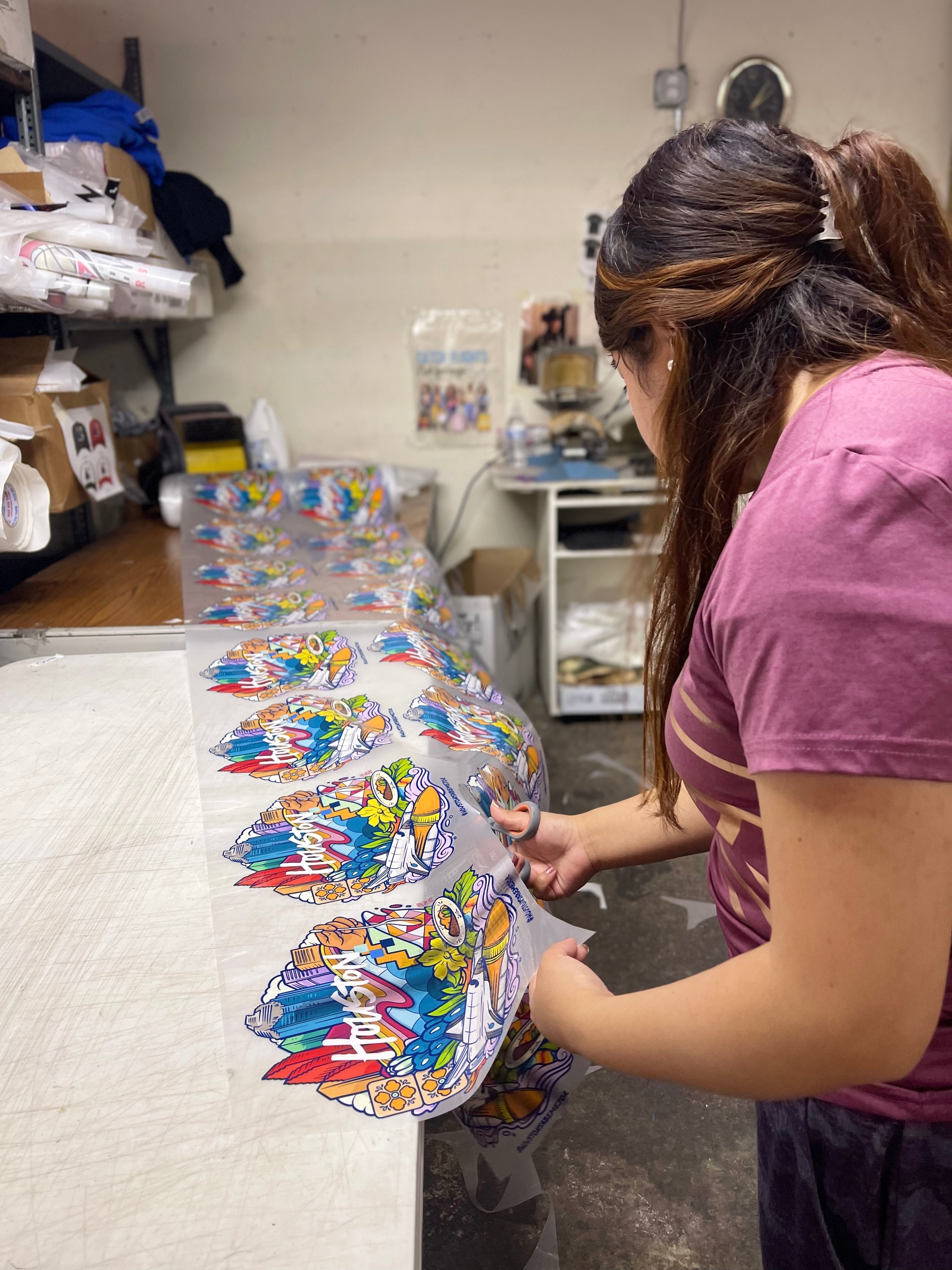The Future of Style: Checking Out DTF Printing Modern Technology in the Fabric Market
Among these advancements, Direct to Movie (DTF) printing modern technology has actually emerged as an encouraging challenger, supplying one-of-a-kind capabilities and chances for designers and suppliers alike. This sophisticated printing method has triggered interest due to its prospective to transform standard fabric printing processes.
Advancement of Fabric Printing
From the old human beings making use of methods like block printing to the electronic transformation of today, textile printing has actually constantly pressed limits. As the craft spread to various other parts of the globe, new techniques such as screen printing and roller printing emerged during the Industrial Change, revolutionizing the textile market.
In the 20th century, developments in technology led to the growth of rotary display printing, permitting faster and extra complex designs. The intro of digital fabric printing in the late 20th century noted a considerable change towards even more sustainable and functional printing approaches. Today, with developments like Direct-to-Fabric (DTF) printing modern technology, designers can produce vibrant, in-depth prints with better efficiency and minimized environmental effect. The evolution of textile printing showcases an abundant background of creativity, resourcefulness, and technical progress in the globe of style and design.
Benefits of DTF Innovation
With the development of fabric printing techniques from ancient techniques like block printing to modern-day technologies such as digital printing, the introduction of Direct-to-Fabric (DTF) technology has actually dramatically enhanced the efficiency and sustainability of textile printing procedures. One of the main benefits of DTF innovation is its capability to straight publish styles onto material without the requirement for transfer documents, which minimizes waste and simplifies the manufacturing procedure. Additionally, DTF printing allows for greater shade vibrancy and information accuracy contrasted to standard techniques, allowing textile manufacturers to create intricate and premium designs effortlessly.
Moreover, DTF technology is recognized for its versatility, as it can be made use of on various kinds of materials, consisting of natural fibers like cotton, silk, and wool, along with artificial materials such as polyester and nylon (DTF Printing). This flexibility opens a vast array of possibilities for producers and designers to trying out different textures and products, causing more distinct and cutting-edge products in the garment industry. In general, the execution of DTF modern technology represents a significant innovation in textile printing, supplying various benefits that contribute to the future sustainability and creative thinking of the market
Sustainability in Style Production
Stressing environmentally friendly techniques is critical in modern fashion manufacturing, aligning with the growing customer demand for lasting items. Over the last few years, the style industry has actually encountered enhancing analysis due to its considerable ecological impact, consisting of excessive water use, chemical contamination, and fabric waste. As an action, several fashion brands are currently incorporating sustainable methods right into their manufacturing processes to decrease harm to the atmosphere.
Sustainability in style manufacturing encompasses different elements, such as making use of organic and recycled materials, lowering power consumption, executing honest labor techniques, and advertising transparency throughout the supply chain. Additionally, improvements in modern technology, like DTF printing, offer opportunities to even more enhance sustainability in textile manufacturing. This innovation makes it possible for specific printing on textiles, reducing ink wastage and water usage compared to traditional printing methods.
Design Flexibility and Modification

Moreover, DTF printing promotes personalization on a scale formerly unattainable, permitting personalized apparel and special pieces customized to individual choices. Consumers can now proactively join the layout process, creating garments that show their style and character. This customization not just enhances the customer experience but also promotes a feeling of exclusivity and uniqueness in a market filled with mass-produced apparel. On the whole, DTF printing technology changes the style landscape in the fabric industry, using unlimited opportunities for creative expression and individualized fashion.
Influence On Supply Chain & Market Trends
DTF printing technology in the fabric sector is improving supply chain dynamics and influencing market fads via its effectiveness and personalization abilities. By making it possible for on-demand printing and removing the requirement for large inventories, DTF modern technology enhances the supply chain process.
Furthermore, the customization possibility of DTF printing innovation is transforming the market fads in the textile industry. Customers increasingly seek individualized and distinct items, and Go Here DTF enables brands to supply bespoke layouts cost-effectively. This personalization capability not just boosts consumer contentment however additionally opens up brand-new chances for businesses to deal with niche markets and separate themselves from competitors. Consequently, DTF technology is driving a change towards more customer-centric and innovative approaches within the fabric industry, shaping the future of style.

Verdict
In conclusion, DTF printing technology is changing the textile industry by using countless benefits such as style freedom, sustainability, and personalization. This innovative technology is reshaping the future of fashion production, affecting supply chains, and driving market patterns in the direction of extra reliable and environmentally friendly methods. As the sector remains to develop, DTF printing will certainly play a critical duty in shaping the way fabrics are generated and eaten in the years ahead.
From the old human beings making use of strategies like block printing to the electronic transformation of today, textile printing has actually consistently pressed limits. As the craft spread to other parts of the world, brand-new approaches such as display printing and roller printing emerged during the Industrial Change, changing the fabric market.
The introduction of electronic fabric printing in the late 20th century noted a considerable shift towards even more versatile and lasting printing techniques.With the evolution of textile printing strategies from ancient methods like block printing to modern-day advancements such as digital printing, the intro of Direct-to-Fabric (DTF) innovation has dramatically improved the efficiency and sustainability of fabric printing processes (DTF Printing).In response to the essential change towards sustainability in style production, the adoption of ingenious technologies like DTF printing not just addresses ecological worries but additionally opens up avenues for unparalleled style freedom and modification in the textile market